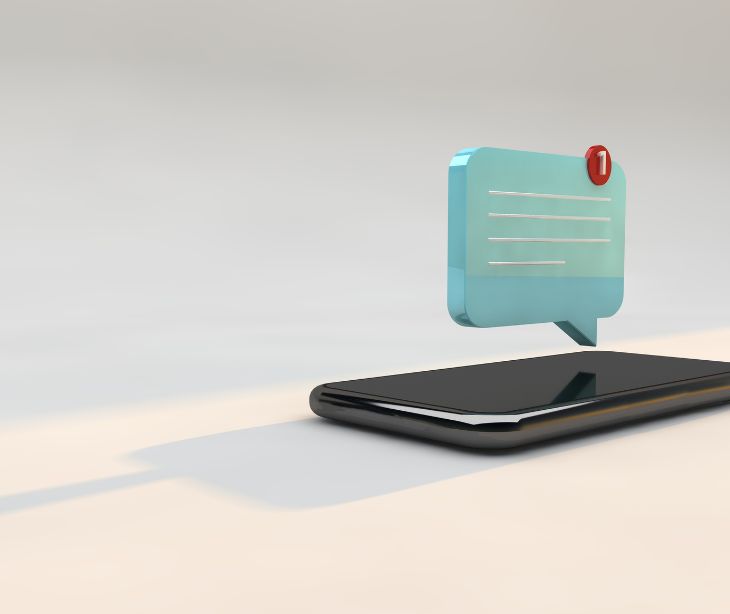3 min read
How to implement cognitive behavioral therapy (CBT) in emails
Caitlin Anthoney April 08, 2024

Providers can integrate CBT principles into HIPAA compliant emails, to offer patients ongoing mental health support. This approach allows for personalized interventions to help patients develop coping skills to improve their overall well-being.
What is cognitive behavioral therapy (CBT)?
The American Psychological Association (APA) defines CBT as “a form of psychological treatment… effective for a range of problems including depression, anxiety disorders, alcohol and drug use problems, marital problems, eating disorders, and severe mental illness.”
CBT is a widely practiced form of psychotherapy that focuses on changing patterns of thinking or behavior to alleviate psychological distress and promote well-being. CBT principles involve identifying and challenging negative thought patterns and behaviors to promote healthier thinking and behaviors.
Providers can integrate CBT principles into HIPAA compliant emails for enhanced mental health support to help patients access therapeutic support conveniently and consistently. It can be especially beneficial for those with difficulty attending in-person therapy sessions due to time constraints or other barriers. Additionally, email-based CBT allows individuals to reflect on their thoughts and responses before communicating with their therapist, promoting self-awareness and insight.
How to integrate CBT principles into email interventions for mental health support
Structured format
CBT often follows a structured approach, breaking down problems into manageable components. Similarly, email interventions can adopt a structured format by dividing content into sections such as problem identification, thought analysis, and action planning. For example:
Introduction: Briefly outline the purpose of the email and what the recipient can expect.
Problem Identification: Encourage recipients to articulate their concerns or challenges.
Thought Analysis: Guide recipients to examine their thoughts and emotions related to the identified problem.
Action Planning: Help recipients develop actionable steps to address the problem.
Psychoeducation
Psychoeducation can be delivered through informative content, explaining common cognitive distortions, coping strategies, and relaxation techniques. Providers can incorporate educational content to help recipients understand CBT. They can also provide examples of cognitive distortions and coping strategies. For example:
"Did you know that catastrophizing is a common cognitive distortion where we magnify the negative aspects of a situation? Let's explore strategies to challenge catastrophizing thoughts together."
Cognitive restructuring
Regular emails can prompt recipients to reflect on their automatic thoughts and emotional responses in specific situations. This could help patients identify cognitive distortions and reframe their thinking patterns. For example:
"Take a moment to journal about a recent situation that triggered strong emotions. What thoughts were running through your mind at the time?"
Homework assignments
Assigning homework is a common practice in CBT to encourage individuals to apply therapeutic techniques outside of sessions. Similarly, emails can include interactive exercises as homework assignments to practice coping skills in their daily lives and reinforce learning between emails.
Assign practical exercises for recipients to apply CBT techniques in their daily lives. For example:
"Your homework this week is to practice using the ABCDE model to challenge negative thoughts. Notice any changes in your mood and behavior as you implement this technique."
Goal setting and behavioral activation
Providers can use emails to guide patients through the process of setting SMART (Specific, Measurable, Achievable, Relevant, Time-bound) goals and developing action plans to accomplish them. For example,
"Let's work together to set a SMART goal for managing stress. Once you've identified your goal, we'll develop a step-by-step plan to achieve it."
Providers can do regular check-ins via email to support patients and promote healthy behaviors.
Feedback and reinforcement
Providers can send personalized feedback based on recipients' progress and reflections, reinforcing positive changes and offering constructive suggestions for growth. For example:
"I'm impressed by your commitment to challenging negative thoughts! Keep up the good work, and remember that every small step counts towards your well-being."
Relapse prevention
Patients and providers can use emails to discuss strategies for maintaining progress and preventing relapse. Providers can also offer additional CBT sessions or address any setbacks.
FAQs
How can collaboration with other healthcare providers enhance email-based CBT interventions?
Collaborating with other healthcare providers can enrich email-based CBT interventions by providing a holistic approach to mental healthcare. More specifically, collaborating with primary care physicians, psychiatrists or other therapists allows for comprehensive assessment, coordinated treatment planning, and integrated care tailored to the individual's needs.
How does HIPAA apply to email communications between therapists and recipients in CBT interventions?
HIPAA applies to email communications in CBT interventions when they involve the transmission of PHI, such as diagnosis, treatment plans, or other identifiable health information. Therapists must implement appropriate security measures and safeguards to protect PHI from unauthorized access, disclosure, or breach during email exchanges.
Can therapists use email to schedule appointments in CBT interventions?
Yes, therapists can use email for scheduling appointments or administrative purposes in CBT interventions, provided that they take appropriate precautions to protect PHI and comply with HIPAA regulations. This should include using a secure emailing platform, like Paubox, and obtaining consent from recipients for email communication.
Read also: How text messages can improve cognitive-behavioral therapy (CBT) in individuals with depression
Subscribe to Paubox Weekly
Every Friday we'll bring you the most important news from Paubox. Our aim is to make you smarter, faster.




